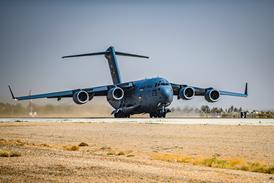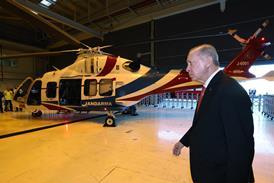Northrop Grumman's "forgotten" advanced tactical fighter leaves museum and could be heading for bomber contest
Northrop Grumman's long-abandoned YF-23A advanced tactical fighter (ATF) is emerging as the possible basis for a surprise contender for the US Air Force's interim bomber requirement.
The company recently retrieved the second of the two YF-23A "Black Widow II" prototypes (PAV-2) from the Western Museum of Flight in Hathorne, California, ostensibly for repainting for display at a forthcoming Northrop Grumman-backed air fair in August. However, the restoration is also thought to include several changes, including new cockpit displays and other possible cosmetic modifications.
Northrop Grumman confirms restoration of the General Electric YF120-powered PAV-2 is taking place, but declines to comment on whether the revived YF-23A is linked to any USAF proposal. But sources close to the studies, which were kicked off by the USAF's recently issued request for information, say Northrop Grumman now includes a YF-23-based "regional" bomber concept among its raft of proposals and that the USAF "is interested".
Until now, the company's offerings are known to include an upgraded B-2, X-47B unmanned combat air vehicle (UCAV) -based studies and possible designs based on its quiet supersonic technology programme. The distinctive, rhomboid-winged YF-23A lost out to Lockheed Martin's YF-22 in the ATF competition in 1991, but proved a valuable technology testbed for Northrop Grumman, which gave it all-aspect stealth. The company says it "drew upon a wide range of experience for its response to the interim bomber RFI, and the YF-23 is one".
Other contenders include a Boeing's B-1R (regional) re-engined bomber studies and a larger D-model version of its X-45 UCAV, while Lockheed Martin is considering various derivatives of the F/A-22. These include single- and two-seat, re-winged and tailless versions dubbed the FB-22, the larger of which would be able to cruise at Mach 1.8 and have 75% of the range of the B-2 carrying up to 30 115kg (250lb) small-diameter bombs. Lockheed Martin is also understood to be offering a variety of other manned designs, including a flying-wing concept.
The interim bomber is intended to bridge the gap between the current bomber fleet and a next-generation aircraft planned for 2037. The present timetable calls for a development effort to start in 2006, with an initial operating capability by 2015.
GUY NORRIS / LOS ANGELES
Source: Flight International























